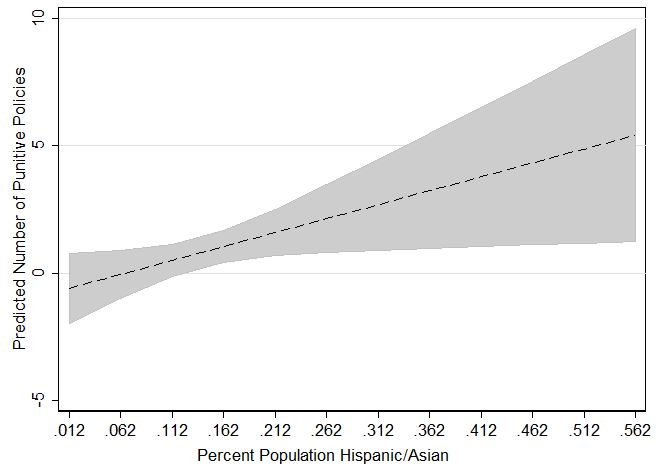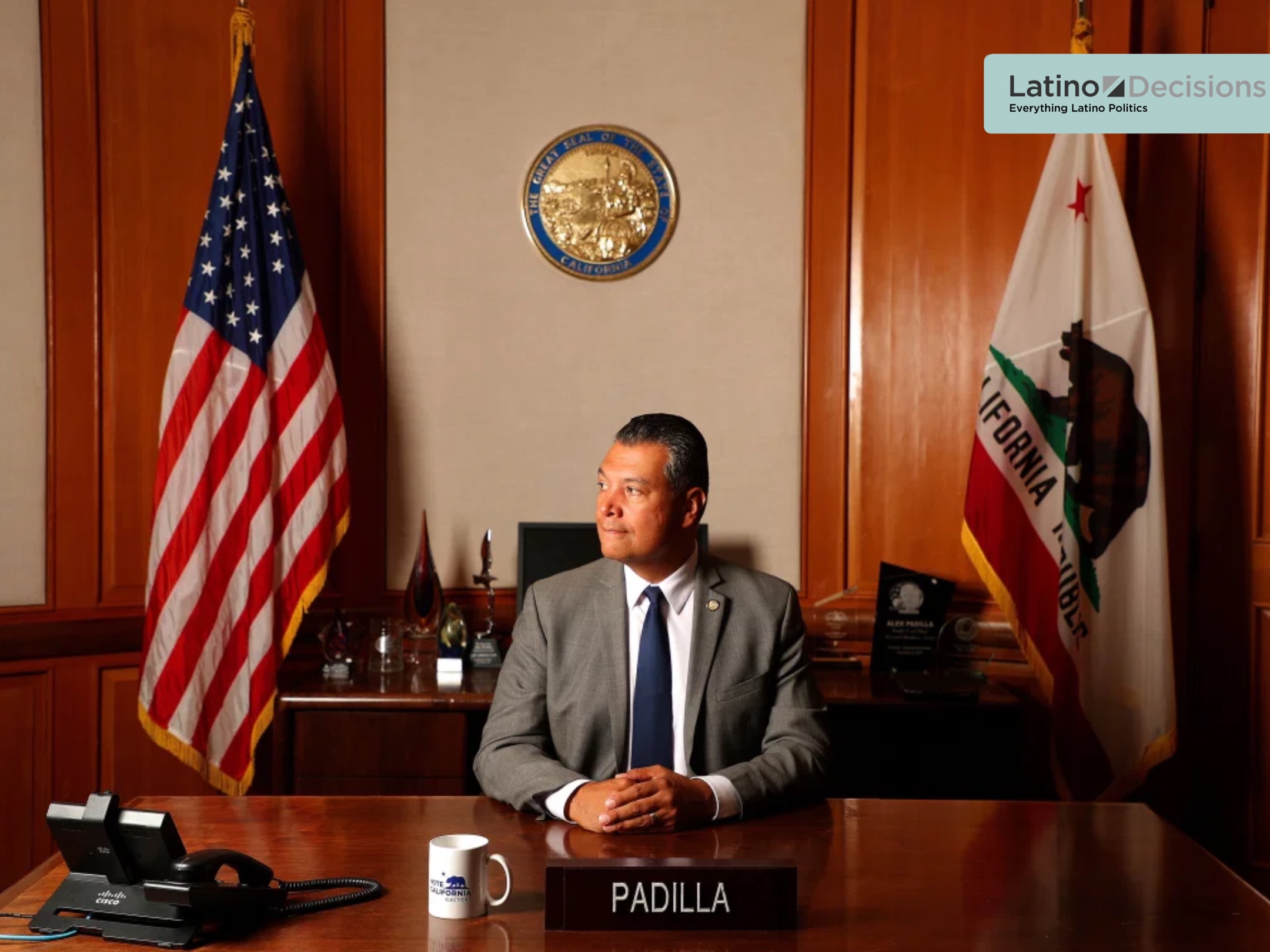In recent years Latino Decisions has analyzed many nuances to federal immigration policy, primarily focused on the Latino electorate’s views on policy options and the electoral impact of various Congressional actions. However, there is less systematic information available on immigration policy at the state level, where thousands of laws and resolutions have been passed over the last few years. The most recent National Conference of State Legislators immigration policy report notes that immigration legislation has decreased compared to prior years. As of June 30, 2013, 43 states had enacted 146 laws and 231 resolutions focused on immigration. This is reflective of a larger pattern where state activity on immigration issues spiked from just 300 proposed bills and 39 enacted laws in 2005 to over 1,500 proposed bills and over 200 enacted state laws in 2009.
For example, in 2011 Alabama passed what many believe to be the most severe anti-immigrant state law on the books. Among other things, Alabama’s HB 56 required police officers to ascertain the immigration status of people stopped, detained or arrested; prohibited undocumented students from attending public institutions of higher education, and required elementary and secondary public school officials to determine citizenship status for all students. The most far-reaching elements of the law are no longer in effect, proving unconstitutional or not sustainable. Still, the Alabama law was more far-reaching than Arizona’s SB 1070, which was much more scrutinized in the public sphere.
Because the increase in state immigration laws occurred in conjunction with the recent economic recession, some might assume that economic factors motivated these policies. The Great Recession of 2008-2009 had a clear and profound negative impact on the American states, with 49 states experiencing revenue decreases in their 2009 budgets, representing over $67.2 billion in losses. However, these laws were also enacted within the context of a major demographic shift across the nation that has resulted in a decrease in white voters from 2008 to 2012 with major increases in non-white voters over the same period.
Research Design
This post draws from data from the National Conference of State Legislatures to examine anti-immigration policy enactment from 2005-2010.[1] We conduct a state comparative study using cross-sectional time series analysis to examine the potential ways the economic recession and changing demographics in the states produced state anti-immigration policy while controlling for political factors. More specifically, our dependent variable is the number of punitive policies adopted during any given state year. With 50 states and 6 years in our constructed dataset, we have a total of 300 state years available for analysis.[2] In terms of explanatory variables, we include state ideology the 50 states, using Berry et al. (1998) measurements 2002-2008, as well as the party of the Governor to capture political influence on immigration policy enactment. We include three economic predictor variables, drawn from the broad state comparative research and chosen specifically to capture the economic impact of the Great Recession on states: State Revenue Change, Average Annual Unemployment Rate, and Per-Capita Personal Income.[3] Finally, we include three demographic predictor variables: including Hispanic/Asian population as a percent of total state population, Hispanic/Asian population change since 1990, and ratio of estimated undocumented population to total state population.
Findings
Prior to conducting our multivariate Negative Binomial regression analysis, we conduct a simple bivariate analysis to first confirm that the number of punitive state immigration policies is indeed greater during the years of the Great Recession. A simple t-test confirms that at a mean of 1.85 enacted per state year, the number of punitive state immigration policies is significantly greater (p=0.0255) during the recession years (2008-2009), than the mean of 1.28 enacted per state year during the non-recession years of our examination (2005-2007, and 2010). This relationship is depicted in the figure below.
While supportive of the notion that immigration legislation has been driven by economic factors the results from our regression analysis reveals nuances to this relationship. While we did find that political and economic factors do contribute to anti-immigrant policymaking in the states in our models, with more conservative states and states experiencing more economic stress being more likely to enact such policies, the largest substantive impact was the size of Hispanic and Asians in the states. Even after controlling for economic and political factors, the size of the Hispanic/Asian population in a state is highly predictive of state’s adopting anti-immigration policy. Post-estimation analysis reveals that as the percent population Hispanic/Asian moves from its lowest value in the dataset (0.012 observed in West Virginia in 2005) to its highest value (0.562 observed in Hawaii in 2010), the predicted number of punitive state policies moves from -0.59 to 5.42, for an absolute range of 6.01 predicted punitive policies (see Figure below). Similarly, as the change in the Hispanic/Asian population at the state level since 1990 moves from its lowest value in the dataset (-0.038 observed in Hawaii in 2005) to its highest value (+6.862 observed in North Carolina in 2010), the predicted number of punitive state policies moves from 0.185 to 2.34, for an absolute range of 2.155 predicted punitive policies (see Figure below).
Predicted Number of Anti-immigration Policies by Percent State Population Hispanic/Asian

One surprising finding is that once we take all these other factors into consideration, the estimated undocumented population in a state is not significantly predictive of anti-immigrant policy-making in the states. So even though state politicians may use rhetoric about undocumented immigrants when passing such laws, our findings do not support that undocumented populations in states are actually driving anti-immigration policy. Rather it is a combination of political, economic and racial factors that are the drivers.
Our findings provide evidence that immigration continues to be a racialized policy issue at the state level, as it has been at the federal level since at least the late 1800s.[4] Thus while factors such as political ideology and economic pressures do play a role in the politics of the legislative enactment of negative immigration policies in the states, the impact of economic pressures must be considered alongside the presence and growth of Hispanic and Asian populations which in many ways have become racialized. In the end, at least over the course of the time period of our examination, the presence and growth of racialized populations have a greater substantive impact on the outcome of punitive immigration policy adoption than any of the other predictors.
Implications of Research Findings
The racial/ethnic composition of immigrants to the U.S. has changed drastically since 1965, with immigrants from Latin America and Asia now making up over 81% of foreign-born residents[5]. With legal immigration at a record high, there is no reason to believe the need to incorporate immigrants in states and localities will decline any time soon. While U.S. immigration policy may be generous in terms of the numbers of legal immigrants admitted each year, the nation lacks a coherent policy approach to immigrant incorporation – activities and programs at the state and local level that would encourage immigrants and their families to be more fully incorporated as members of their communities. Such local efforts have been successful in more fully incorporating immigrants as members of their new communities [6] , and could go a long way toward reducing sentiments of racialized nativism.
Gabriel R. Sanchez is an Associate Professor of Political Science at the University of New Mexico, Interim Director of the RWJF Center for Health Policy at UNM and Research Director for Latino Decisions. Lisa M. Sanchez is a PhD Candidate in Political Science and RWJF Center Fellow at the University of New Mexico. Vickie Ybarra is a PhD Candidate in Political Science and RWJF Center Fellow at the University of New Mexico.
This research was supported by the Russell Sage Foundation’s Program on the Social Effects of the Great Recession
[1] Our research team coded each piece of legislation in the NCLS dataset as to direction – neutral, beneficial to immigrants, or punitive to immigrants. Only those coded as punitive to immigrants are used in the dependent variable for this study.
[2] Given that the dependent variable in our analysis is a count variable of policies and we employ panel data, we make use of a cross-sectional Negative Binomial regression model.
[3] State Revenue Change is measured using data from the National Association of State Budget Officers (National Association of State Budget Officers 2012, 2010, 2008, 2006). Average Annual Unemployment rate for each state and each year was obtained from the U.S. Department of Labor, Bureau of Labor Statistics. Finally, Per Capita Personal Income is obtained from the U.S. Department of Commerce, Bureau of Economic Analysis for each state and each year 2005-2010.
[4] Ngai, Mae. 2004. Impossible Subjects: Illegal Aliens and the Making of Modern America. Princeton, NJ: Princeton University Press.
[5] Grieco et al. 2012. “The Foreign-Born Population in the United States: 2010.” U.S. Census Bureau.
[6] Thorton, Susan M. 2009. “The Littleton Immigrant Integration Initiative.” National Civic Review. Spring: 31-39.


